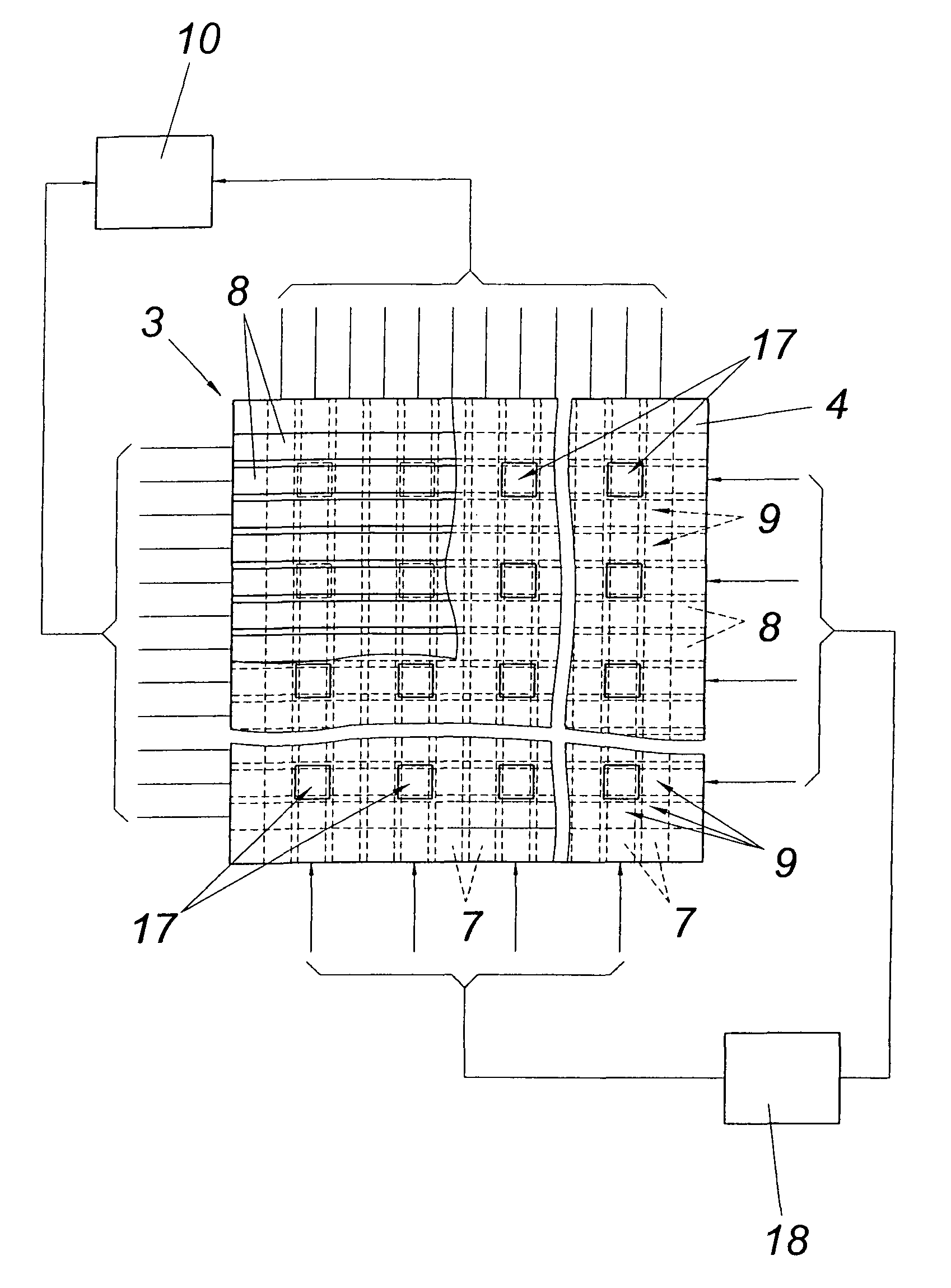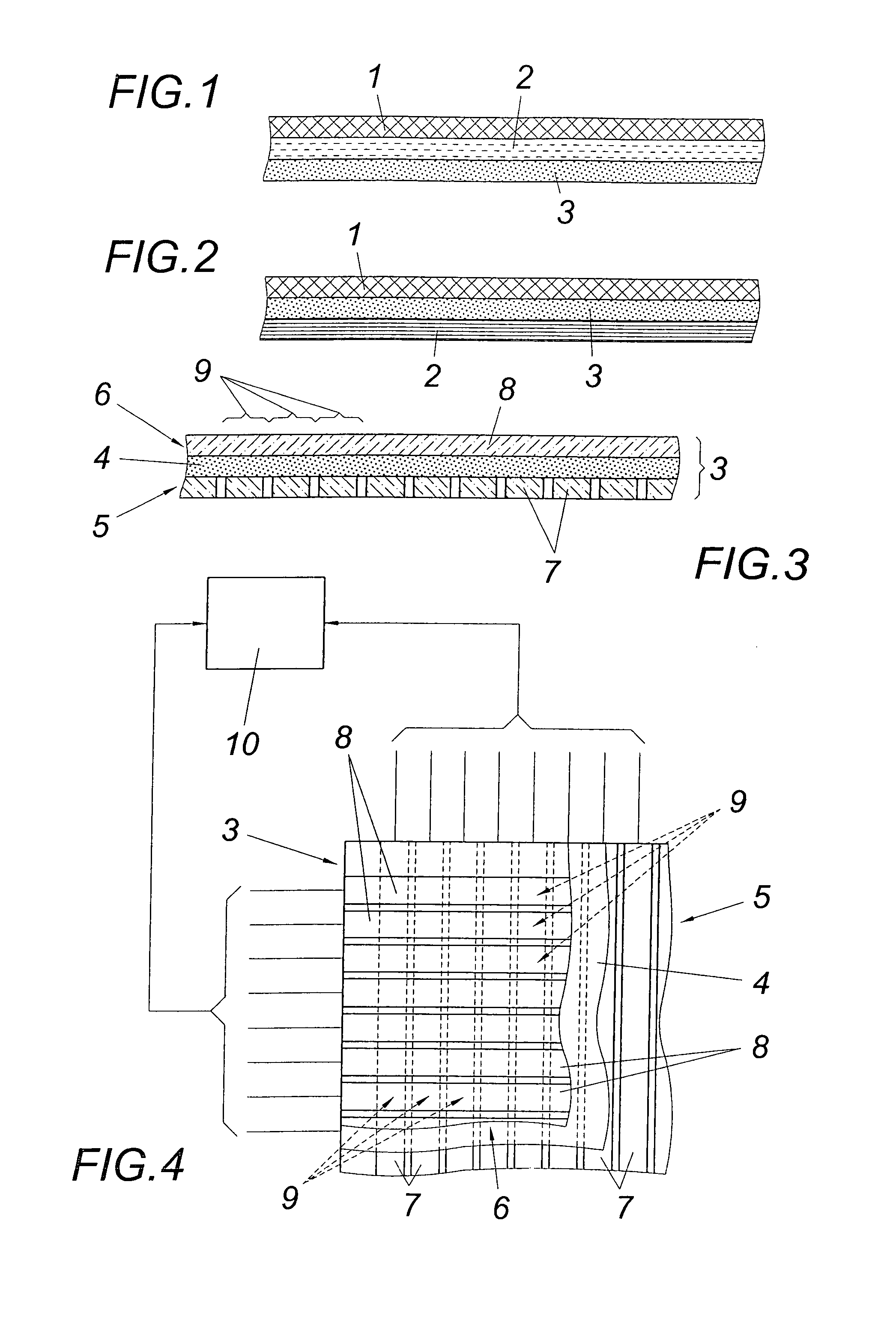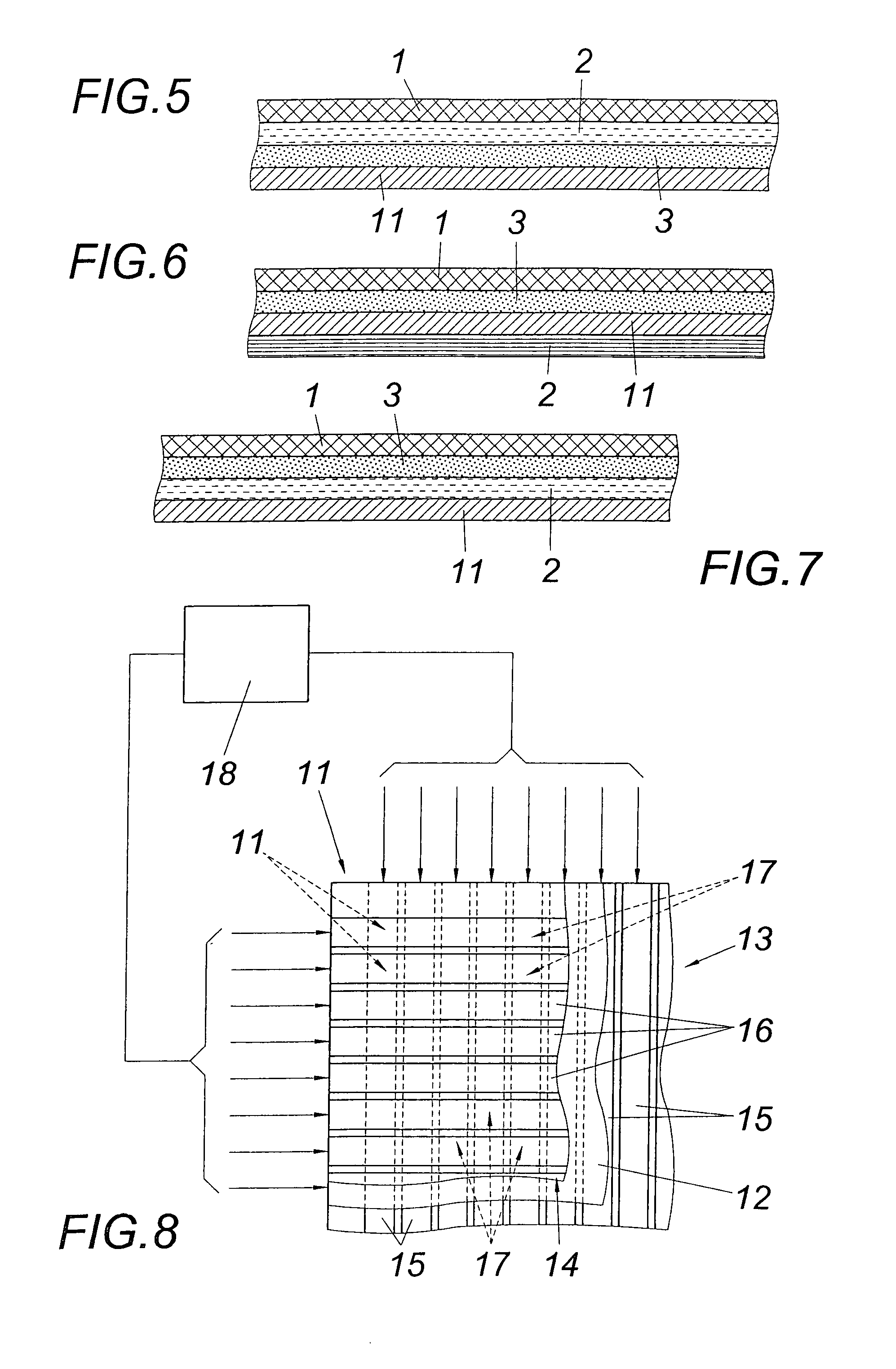Device for evaluating biochemical samples
a biochemical and sample technology, applied in the direction of biochemical instruments and processes, material testing goods, instruments, etc., can solve the problems of cost which is associated with image recording means and not correlated with cos
- Summary
- Abstract
- Description
- Claims
- Application Information
AI Technical Summary
Benefits of technology
Problems solved by technology
Method used
Image
Examples
Embodiment Construction
[0026]As shown in FIG. 1, the biochemical samples 1 to be evaluated are attached to a translucent sample carrier 2, either in the form of a continuous layer or in mutually separated regions. On the side of the translucent sample carrier 2 that is remote from the samples 1, there is provided a light-sensitive layer 3 allowing the spectral change, occurring in the event of a corresponding reaction of the samples with a reagent, in the absorption of light radiation to be determined by the detection of the transmitted light or fluorescent radiation, excited using light, of correspondingly labelled biomolecules. As may be seen from FIG. 2, the light-sensitive layer 3 can also be arranged between the samples 1 and the sample carrier 2, so the samples 1 are attached to the light-sensitive layer 3, an insulating layer optionally being interposed. In this case, the sample carrier 2 does not have to be translucent.
[0027]The light-sensitive layer 3 has, as shown in FIGS. 3 and 4, a photoactive...
PUM
| Property | Measurement | Unit |
|---|---|---|
| time | aaaaa | aaaaa |
| fluorescent | aaaaa | aaaaa |
| solubility | aaaaa | aaaaa |
Abstract
Description
Claims
Application Information
 Login to View More
Login to View More - R&D
- Intellectual Property
- Life Sciences
- Materials
- Tech Scout
- Unparalleled Data Quality
- Higher Quality Content
- 60% Fewer Hallucinations
Browse by: Latest US Patents, China's latest patents, Technical Efficacy Thesaurus, Application Domain, Technology Topic, Popular Technical Reports.
© 2025 PatSnap. All rights reserved.Legal|Privacy policy|Modern Slavery Act Transparency Statement|Sitemap|About US| Contact US: help@patsnap.com



